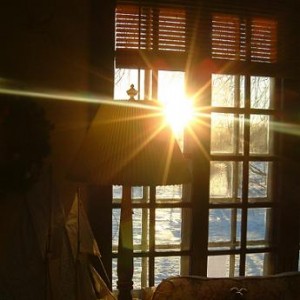
More evidence that low-calorie sweeteners are bad for your health
Studies show that artificial sweeteners can raise the risk of hypertension, metabolic syndrome, type 2 diabetes and heart disease, including stroke.

Natural Health News — Here’s an interesting bit of advice if you are looking to lose weight or stay trim – expose yourself to some morning light.
A new has shown for the first time that people who get most of their daily exposure to even moderately bright light in the morning have a significantly lower body mass index (BMI, a ratio calculated from a person’s weight and height) than those who had most of their light exposure later in the day.
The small study included 54 people (26 males, 28 females), an average age of 30. They wore a wrist monitor that measured their light exposure and sleep parameters for seven days in normal-living conditions. Their caloric intake was determined from seven days of food logs.
Results showed that the influence of morning light exposure accounted for about 20% of a person’s BMI. This influence on body weight was independent of an individual’s physical activity level, caloric intake, sleep timing, age or season.
“Light is the most potent agent to synchronize your internal body clock that regulates circadian rhythms, which in turn also regulate energy balance,” said study senior author Phyllis C. Zee, MD, Benjamin and Virginia T. Boshes Professor of Neurology and director of the Northwestern Medicine Sleep and Circadian Rhythms Research Program at Northwestern University Feinberg School of Medicine.
“The message is that you should get more bright light between 8 a.m. and noon.” About 20 to 30 minutes of morning light is enough to affect BMI.
“If a person doesn’t get sufficient light at the appropriate time of day, it could de-synchronize your internal body clock, which is known to alter metabolism and can lead to weight gain,” Zee said.
The exact mechanism of how light affects body fat requires further research, she noted.
The study is published in the journal PLOS ONE.
How much light do you need?
Many people do not get enough natural light in the morning, Zee said, because the American lifestyle is predominantly indoors. We also work in poorly lit environments, usually about 200 to 300 lux.
In the study, 500 lux was “the magic number” or minimum threshold for having a lower BMI. Even on a cloudy day, outdoor light is more than 1,000 lux of brightness. It is difficult to achieve this light level with usual indoor lighting, the scientists noted.
“Light is a modifiable factor with the potential to be used in weight management programs,” said co-lead author Kathryn Reid, research associate professor of neurology at Northwestern University Feinberg School of Medicine.
“Just like people are trying to get more sleep to help them lose weight, perhaps manipulating light is another way to lose weight.”
Your body clock is your friend
The finding emphasises the importance of “circadian health” in which exposure to light and dark is synchronised with your internal body clock. (For more on this see our in-depth article Chronomedicine – natural cycles that rule our health)
“We focus on how too much light at night is bad; it’s also bad not to get enough light at the appropriate time during the day,” Zee said.
As part of a healthy lifestyle, people should be encouraged to get more appropriate exposure to light. Workplaces and schools should have windows. Employees should be encouraged to go outside for lunch or breaks, and indoor lighting should be improved in the school and workplace “This is something we could institute early on in our schools to prevent obesity on a larger scale,” Zee said.
While duration and timing of sleep was not linked to the results, “owl” chronotypes, who stay up later and sleep later, would be a population affected by later light exposure. But even “larks,” those who wake early, would be affected by lack of early light if they stayed inside in the morning.
Several studies now indicate that morning light exposure helps reduce body fat and appetite as well as the level of appetite regulating hormones.

Please subscribe me to your newsletter mailing list. I have read the
privacy statement